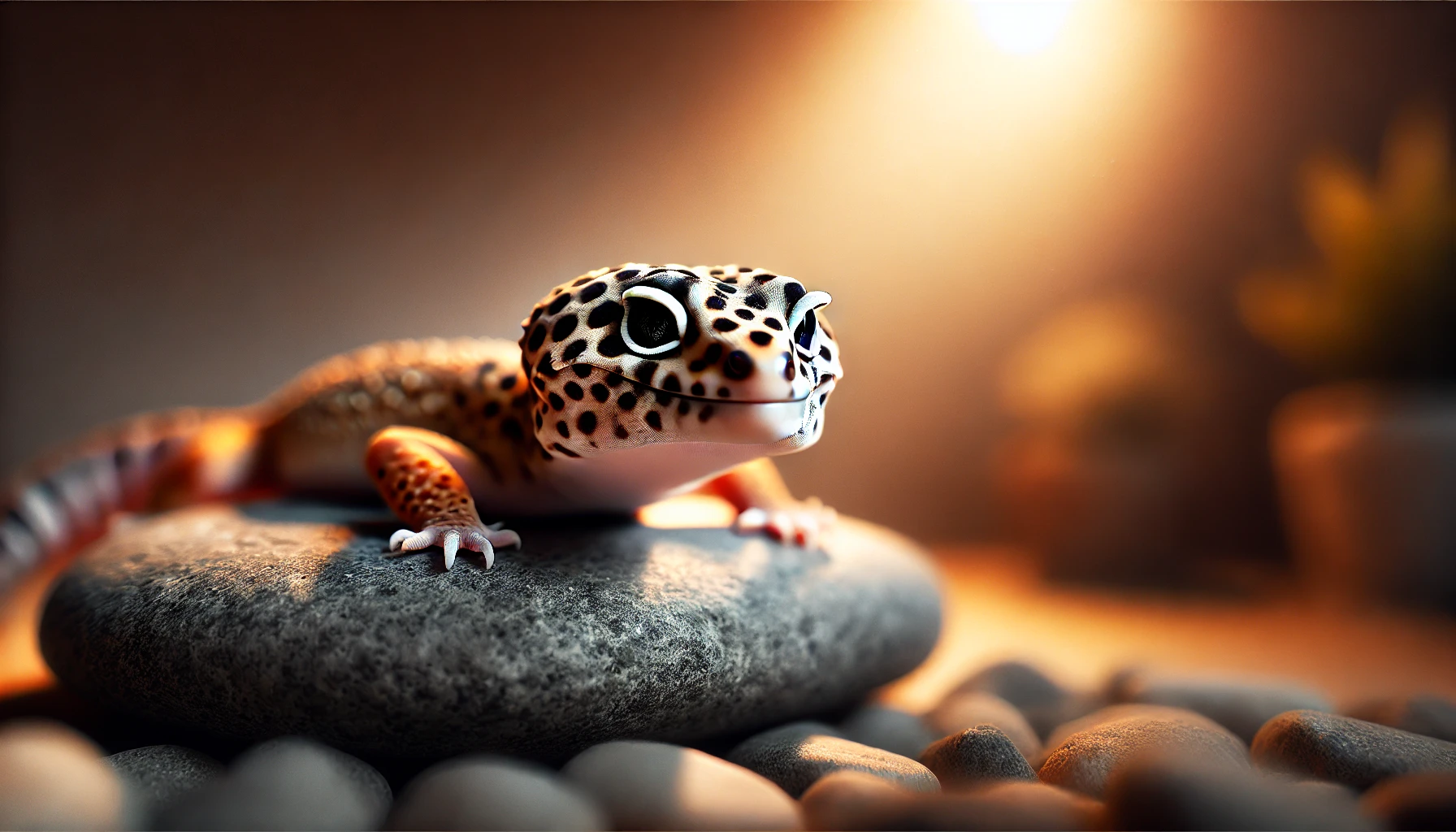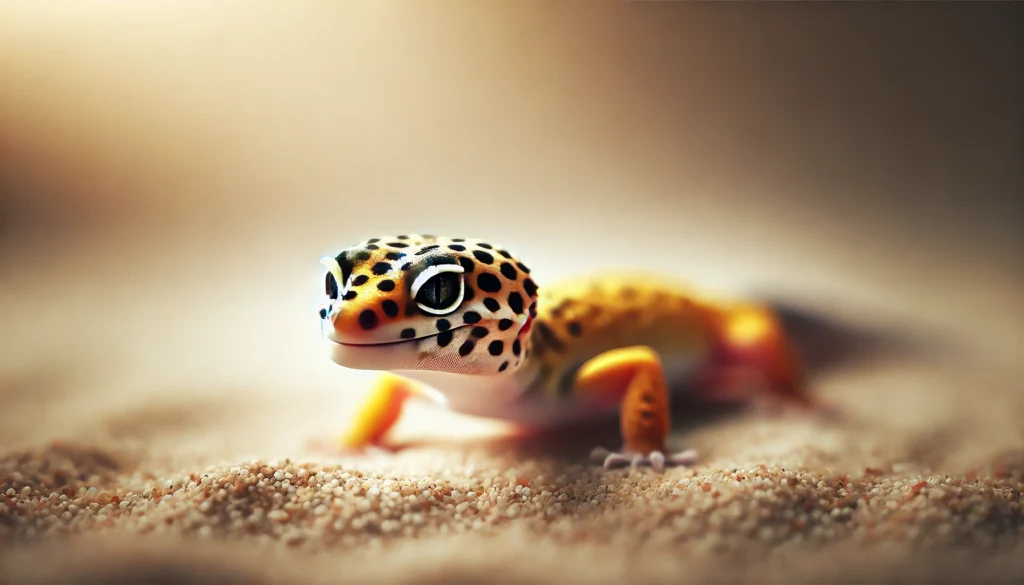Ultimate Leopard Gecko Care: Ensuring Your Gecko Thrives

Leopard Gecko Care: Understanding the Essentials
Geckos are fascinating reptiles that make excellent pets due to their gentle demeanor and relatively straightforward care requirements. Whether you’re new to owning geckos or considering adding another to your collection, knowing how to care for them properly is key to ensuring their well-being and longevity.
Leopard Gecko Lifespan and Basic Information
Leopard gecko has an average lifespan of 15 to 20 years when cared for properly. These geckos are native to the arid regions of Afghanistan, Pakistan, and northwest India, where they thrive in warm, dry climates. In captivity, replicating their natural habitat is crucial for their health.

Leopard Gecko Habitat Requirements
Housing and Tank Setup
When setting up your Gecko’s enclosure, ensure it’s spacious enough to accommodate their natural behaviors. A 20-gallon tank is suitable for one adult gecko, with additional space needed for multiple geckos or breeding pairs. Provide a secure lid to prevent escapes, as Geckos are known climbers.
Leopard Gecko Tank Setup and Substrate
Choose a substrate that allows for burrowing, such as reptile carpet, paper towels, or safe sand substrates designed for reptiles. Avoid substrates like loose sand or gravel that can lead to digestive issues if ingested accidentally.
Leopard Gecko Temperature and Lighting Needs
Maintain a temperature gradient within the enclosure to allow your gecko to regulate its body temperature effectively. The warm side of the tank should be around 88-90°F (31-32°C) during the day, while the cooler side should be around 70-75°F (21-24°C) at night. Use an under-tank heating pad or heat mat on one side of the tank to create a warm spot, supplemented by a ceramic heat emitter or low-wattage heat bulb if necessary. While Geckos do not require UVB lighting, a low-level UVB light can benefit calcium metabolism if used correctly.
Leopard Gecko Diet and Feeding Schedule
Geckos are insectivores, meaning their diet primarily consists of insects. Offer a variety of gut-loaded insects such as crickets, mealworms, waxworms, and dubia roaches. Feed appropriately sized prey items, with juveniles requiring smaller insects more frequently than adults. Dust insects with calcium and vitamin D3 supplements every other feeding, and provide a multivitamin supplement once a week.
Health and Handling Tips for Leopard Geckos
Regularly monitor your gecko’s health by observing their behavior and appearance. Look out for signs of illness such as weight loss, changes in appetite, or abnormal shedding. Handle your gecko gently and infrequently to minimize stress, especially if they are young or new to your home.
Breeding Considerations and Additional Tips
If you’re considering breeding Geckos, ensure both parents are healthy and mature. Provide a separate nesting box for the female to lay her eggs, and incubate them at controlled temperatures to maximize hatch rates.
Do You Know
Cats thrive on predictability, and a consistent routine can significantly reduce cat anxiety. Keeping a regular schedule for feeding, playtime, and cuddling helps your cat know what to expect, which reduces stress and anxiety. Consistency in your daily interactions and the timing of these activities can help create a sense of normalcy and security for your anxious cat.
Fascinating Facts About Geckos
1. Specialized Toes for Climbing
Geckos have unique toes equipped with microscopic hair-like structures called setae that allow them to cling to most surfaces, including glass and walls. This incredible ability, known as “wet adhesion,” helps them move effortlessly across vertical surfaces. However, geckos can’t adhere to wet or oily surfaces, as the setae require a dry surface to function properly.
2. Tail Autotomy for Escape
One of the most remarkable survival strategies in geckos is their ability to shed their tails when threatened by predators. This process, known as autotomy, allows them to escape while the detached tail wriggles and distracts the attacker. Afterward, the gecko can grow a new tail, though it may not be as perfect as the original one.
3. Nocturnal Vision
Geckos are primarily nocturnal animals, meaning they are most active at night. Their large, specialized eyes are adapted for low-light environments, giving them excellent night vision. This helps them navigate in the dark, hunt for insects, and avoid predators during their nighttime activities.
4. Vocal Communication
Geckos are known to communicate using a variety of sounds, including chirps, clicks, and even barking. These vocalizations are especially common during mating rituals or when defending their territory. The sounds allow geckos to signal different messages to each other, whether it’s attracting a mate or warning another gecko to stay away.
5. Diverse Species Around the World
There are over 1,600 species of geckos found around the world, each adapted to its specific environment. Some geckos are tiny, measuring just a few centimeters, while others can grow to nearly two feet in length. These reptiles are found in a variety of habitats, including deserts, rainforests, and even urban areas, showcasing their incredible adaptability.
Conclusion
In conclusion, leopard geckos are captivating pets that thrive with proper care and attention to their specific needs. By providing a suitable habitat, a balanced diet, and regular health checks, you can ensure your Gecko lives a long and healthy life. Remember to research specific behaviors and requirements of Geckos to tailor their care accordingly, ensuring a rewarding experience for both you and your gecko.
Is a leopard gecko a good pet?
Absolutely! Geckos are known for being docile and easy to care for, making them ideal pets, especially for beginners. They require minimal space, as a 20-gallon tank is sufficient for an adult. Their nocturnal nature means they’re most active when many people are home from work or school, allowing for more interaction. They’re also long-lived, with a lifespan of 10-20 years if cared for properly.
What do leopard geckos eat?
Geckos are insectivores, primarily feeding on insects like crickets, mealworms, and waxworms. It’s important to provide a variety of insects to ensure a balanced diet. Feeding them insects that have been “gut loaded,” or fed nutrient-rich foods, is essential, and occasionally dusting these insects with a vitamin and mineral supplement will help maintain their health.
Is a leopard gecko poisonous?
No, Geckos are not poisonous or venomous. They are completely safe to handle and pose no toxic threat to humans. This makes them an excellent choice for a family pet, as they are gentle and unlikely to cause any harm through bites or scratches.
Is it safe to touch a leopard gecko?
Yes, it is safe to touch a Gecko. They are known for their gentle disposition and are usually quite tolerant of handling. However, it’s important to wash your hands before and after handling to prevent the spread of bacteria, and handling should be done gently to avoid causing stress to the animal.
Do geckos run fast?
Geckos are not particularly fast runners compared to other lizards. They rely more on their ability to climb and their agility to escape predators. However, when necessary, they can move quickly in short bursts to catch prey or evade threats.
Will my leopard gecko bite?
Geckos can bite if threatened or stressed, but this is rare. They are generally docile and easy to handle. Bites are not usually painful and are unlikely to break human skin. Proper handling and regular interaction can reduce the likelihood of biting.
Do leopard geckos love heat?
Geckos require a warm environment to thrive. They need a thermal gradient in their enclosure, with a warm side kept between 85-90 degrees Fahrenheit and a cooler side in the low 70s. This allows them to regulate their body temperature by moving between warmer and cooler areas.
Is a leopard gecko aggressive?
Geckos are typically not aggressive. They are one of the more docile species of lizards and are well-suited to handling. They might show aggression if improperly handled or if they feel threatened, but this behavior is not common.
Do leopard geckos have teeth?
Yes, Geckos do have teeth. They have small, sharp teeth that they use to grab and chew their insect prey. Their teeth can grow back if they lose any, which is beneficial given their diet.
Do leopard geckos carry diseases?
Like all animals, Geckos can carry pathogens, including bacteria such as Salmonella. It’s important to practice good hygiene, like washing hands before and after handling your pet, to minimize the risk of transmission.
Are geckos friendly to humans?
Geckos, especially species like Geckos, can be quite friendly and tolerant of human interaction. With regular, gentle handling, they can become accustomed to their owners and are generally easy to care for.
Is a gecko a beginner pet?
Yes, geckos, particularly Geckos, are excellent beginner pets. They have simple dietary and environmental needs, and their docile nature makes them easy to handle and care for, making them ideal for novice pet owners.
Do leopard geckos need a friend?
Geckos are solitary creatures and do not require the company of another gecko. In fact, housing them together can lead to stress, competition for resources, and even physical harm if they are not compatible.
Do leopard geckos hurt?
Geckos are gentle and typically do not hurt humans. Their bites are rare and generally not painful. However, care must be taken to handle them gently to prevent any distress or injury to the gecko itself.
What is the gecko language?
Geckos communicate mainly through body language and vocalizations. They use a variety of sounds like chirps, clicks, and hisses to express different emotions, such as excitement, distress, or to ward off other geckos. These sounds help them interact with each other, especially during mating or territorial disputes. Their body language, such as tail movements and postures, also conveys important signals, whether they are alert, stressed, or content.
Do leopard geckos like their owners?
Geckos can become accustomed to their owners over time and may even develop a sense of familiarity. While they don’t show affection in the same way pets like dogs or cats do, they can learn to tolerate gentle handling and may show signs of trust, like sitting calmly on their owner’s hand. With regular interaction, they often become more comfortable around their owners, though they remain independent animals.
